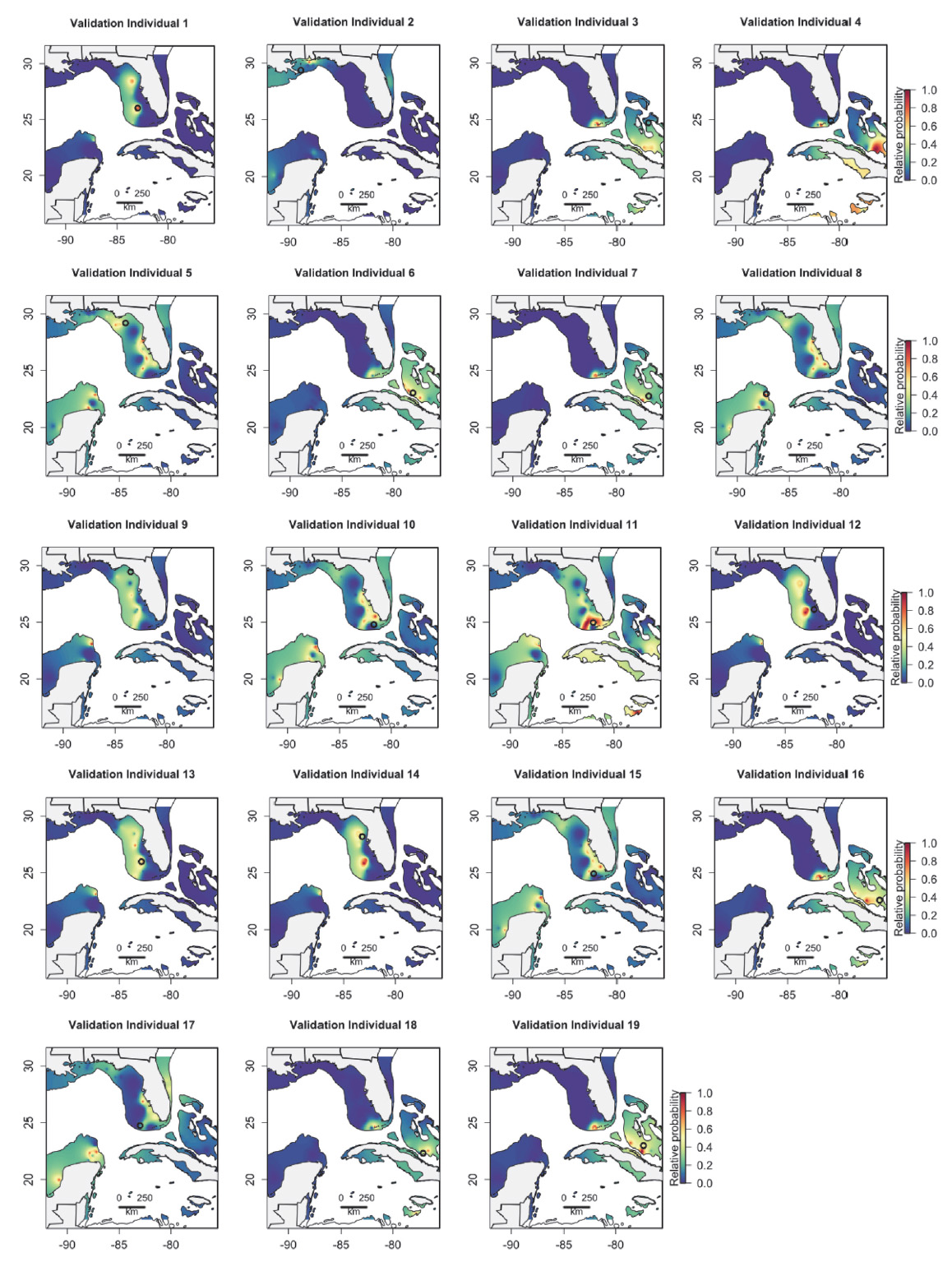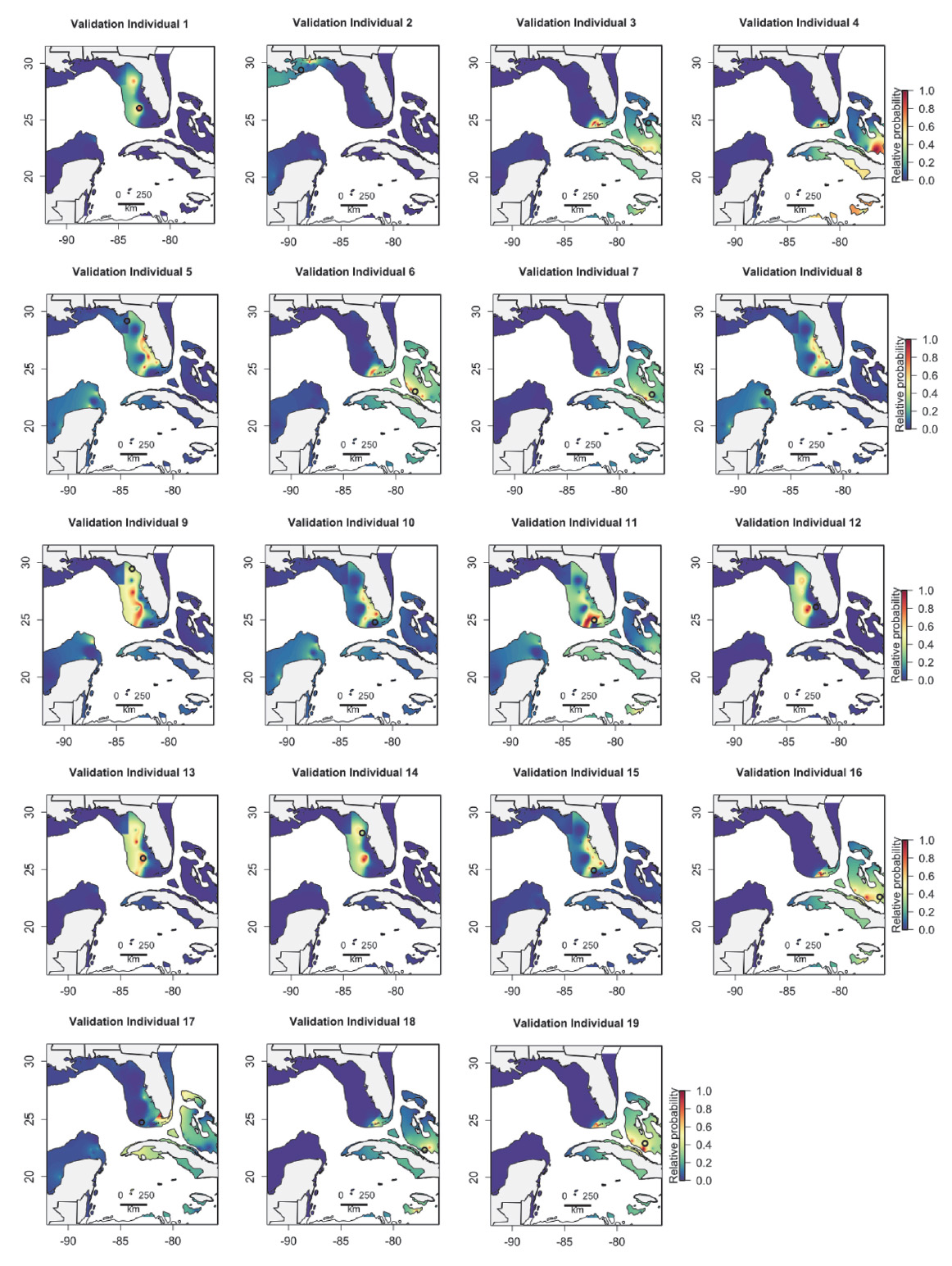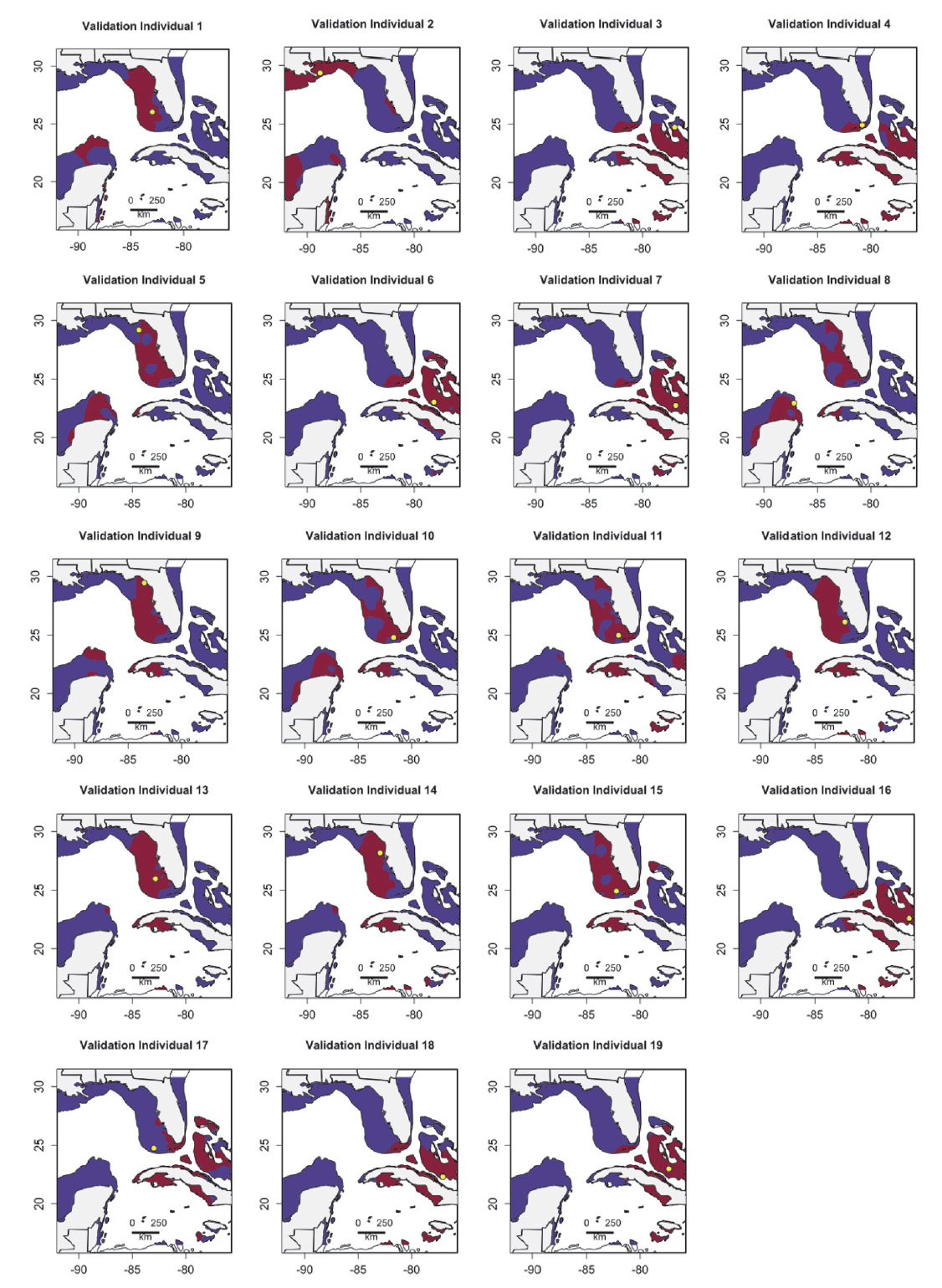
Ecological Archives A025-019-A3
Hannah B. Vander Zanden, Anton D. Tucker, Kristen M. Hart, Margaret M. Lamont, Ikuko Fujisaki, David S. Addison, Katherine L. Mansfield, Katrina F. Phillips, Michael B. Wunder, Gabriel J. Bowen, Mariela Pajuelo, Alan B. Bolten, and Karen A. Bjorndal. 2015. Determining origin in a migratory marine vertebrate: a novel method to integrate stable isotopes and satellite tracking. Ecological Applications 25:320–335. http://dx.doi.org/10.1890/14-0581.1
Appendix C. Validation individual assignment maps.

Fig. C1. Continuous surface assignments for 19 validation individuals using uniform priors. All surfaces have been rescaled to the highest likelihood in that surface so that the relative probabilities range between 0 and 1.

Fig. C2. Continuous surface assignments for 19 validation individuals using non-uniform priors (Table 2 of main text). All surfaces have been rescaled to the highest likelihood in that surface so that the relative probabilities range between 0 and 1.

Fig. C3. Binary continuous surface assignments for 19 validation individuals using uniform priors. Each surface has been recoded so that the top 25% in red represents "likely" areas of origin, while indigo represents "unlikely" areas of origin.; Validation individuals 10, 12, 15, and 17 had foraging centroids that did not fall within the "likely" surface.

Fig. C4. Binary continuous surface assignments for 19 validation individuals using non-uniform priors (Table 2 of main text). Each surface has been recoded so that the top 25% in red represents "likely" areas of origin, while indigo represents "unlikely" areas of origin. Validation individuals 5, 10, 12, and 17 had foraging centroids that did not fall within the "likely" surface.